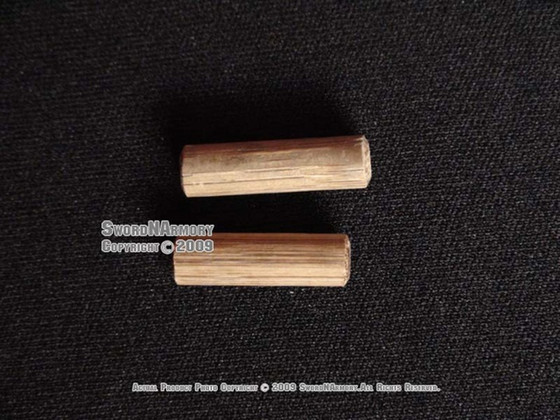Why're Mekugi Important Parts of the Japanese Sword?
Posted by Sword N Armory on Mar 24th 2020
Almost everyone has heard of a katana and likely, most have also heard of a tanto and a wakizashi. However, how many of you out there have heard of a mekugi? Very likely, not many. Now, to be clear, a katana, tanto and wakizashi are all different types of Japanese swords, popular with warriors during the feudal age, however, a mekugi is not a sword at all but rather an integral part of ancient, high quality sword construction.
A mekugi is a small rounded peg, which were traditionally crafted of strong bamboo, that's fitted horizontally through the handle of a Japanese sword. Generally speaking, most swords feature around two mekugi which are laterally slotted into the sword handle through the nakago (the central, covered portion of the sword itself), however, some swords only use one. Classical Japanese mekugi are crafted of strong susudake bamboo which are meticulously smoked and aged for increased resiliency.
Sword collectors or prospective sword craftsman, sword smiths, and actual sword practitioners should know what a mekugi is; for improperly inserted or weak mekugi can completely compromise the integrity of the weapon entirely. Indeed, so crucial was the mekugi to sword integrity that it was often said in feudal japan, that a Samurai's life rested upon the quality of his mekugi. This is because that small little bamboo peg is all that’s left to hold the blade of one's weapon in place should it come unfettered from the handle.
This is why nearly every single sword maintenance and sword cutting guide out there will tell you over and over again how dangerous it is to practice without a mekugi, as the blade will be much more likely to fly from the handle and cut its wielder.












